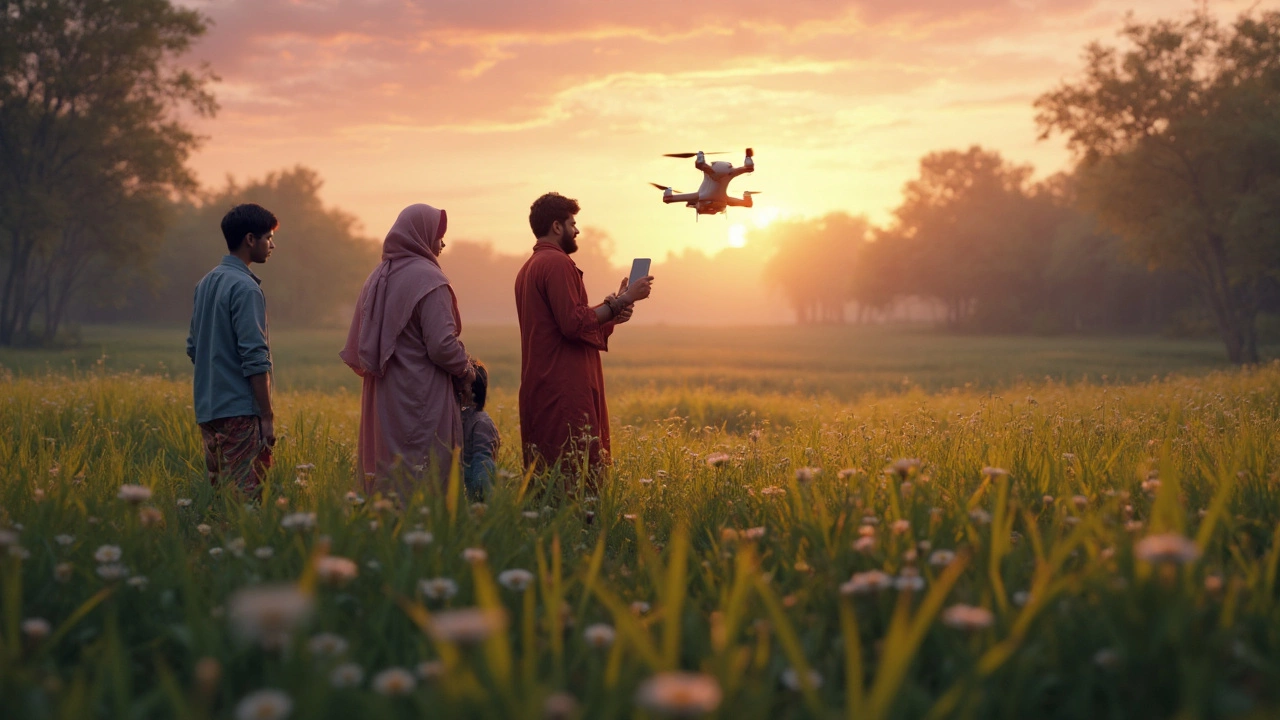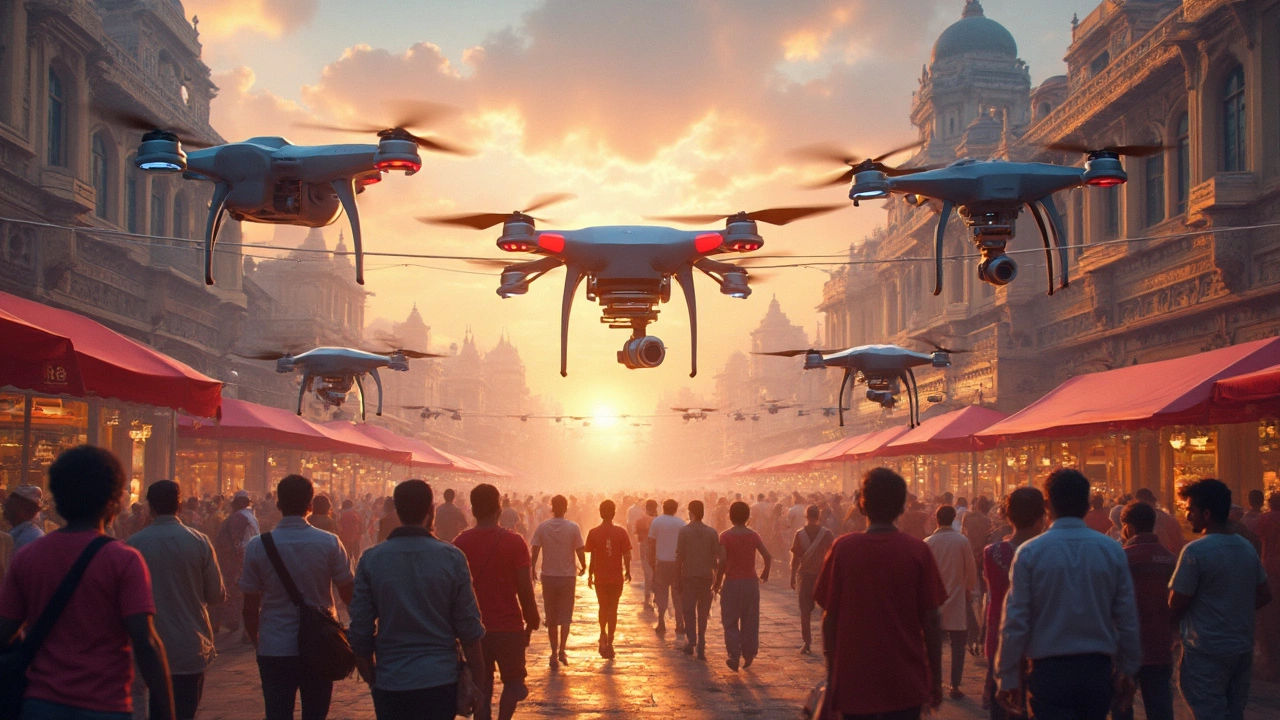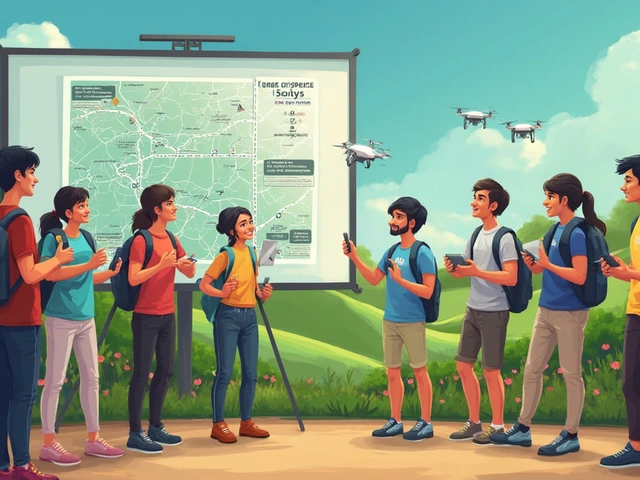Ever wondered why the US decided to put the brakes on DJI drones, given how popular they are among photographers and tech enthusiasts? This move has stirred up quite a conversation, especially in the drone community. If you're knee-deep in drone photography, especially here in India, you might be scratching your head about what this means for your gear and future projects.
The US government has its reasons, and it mostly revolves around security concerns. Think data privacy and those kinds of jitters. But while the US grapples with these issues, you're probably wondering what happens next. Can those shiny drones still snap epic shots elsewhere? And what about the alternatives out there? Let's dissect this situation and see what it really means for you and other drone fans.
- The Background of the DJI Ban
- Implications for Drone Photography
- Alternatives to DJI Drones
- What It Means for Indian Drone Users
The Background of the DJI Ban
The buzz about the DJI ban in the US isn't just a rumor. It’s a real deal, and it's rooted in some serious concerns. It all started when the US government began looking into the potential risks of foreign technologies, especially those coming from China. DJI, being a dominant player in the drone market, naturally came under scrutiny.
Security agencies were worried about where all the data from these drones could end up. The main beef was that DJI drones could send sensitive data back to Chinese servers, which might pose a national security threat. Even though DJI denied these claims, the concerns were strong enough for the US to take action.
In December 2020, the US Department of Commerce added DJI to its Entity List. This move essentially restricted US companies from exporting technologies to DJI, similar to what happened to Huawei. Although this isn't an outright ban on selling or using DJI drones in the US, it does make it a bit trickier financially and logistically for DJI.
Interestingly, according to a report, DJI controls about 70% of the world's commercial drone market share. However, this ban has sparked a conversation about what alternatives exist and how this might shake up the industry.
Implications for Drone Photography
So, what does the US ban on DJI mean for drone photography fans, especially if you're shooting breathtaking landscapes in India? Well, it's a bit of a mixed bag, considering DJI was leading the game with innovative technology and accessible prices. This ban shook the US market, but let's see how it affects users elsewhere.
For starters, the impact is more noticeable in professional setups where reliability and advanced features are crucial. Without access to DJI's vast range of DJI drones, many professionals are scrambling for alternatives that match the same quality and functionalities.
Amateur photographers might feel less of a pinch since entry-level drones from other brands are still available. However, the sophisticated features like superior stabilization, intelligent modes, and high-quality camera systems that DJI is known for are not so easily replaced.
Here's what some Indian drone photographers are doing:
- Exploring Alternatives: Enthusiasts are now exploring options like Autel Robotics and Skydio, which are gaining traction. These alternatives might fill the gap but are often pricier and may not offer the same user experience.
- Skill Focus: There's now a trend to enhance skills in editing and post-production, helping users make the best out of available drone footage.
- Leasing Over Buying: Instead of investing heavily in a new drone, some photographers opt to lease high-end models when needed, particularly for larger projects.
Interestingly, sales for camera accessories and smartphone gimbals have also increased as photographers pivot to ground-based photography, at least until they find a new airborne favorite.
In short, many users are feeling the pinch due to limited access to DJI drones, but with a bit of creativity and willingness to adapt, there’s still a way to keep flying high in the drone photography world!

Alternatives to DJI Drones
If you're in the market for a new drone because of the whole DJI ban in the US, fear not, the drone landscape is buzzing with alternatives that can get the job done quite well. You don’t have to say goodbye to your drone dreams just yet!
First up, there's the Autel Robotics’ EVO series. These drones have been making waves due to their impressive specs and performance that can give DJI a run for their money. The Autel EVO II, for instance, stands out with 8K video capability and a whopping 40-minute flight time. Now that’s a lot of sky time!
Another strong contender is Skydio. Particularly famous for their autonomous flight tech, Skydio drones are perfect if you love getting those cinematic shots without worrying too much about piloting. The Skydio 2+ is equipped with artificial intelligence that allows the drone to follow subjects while avoiding obstacles effectively.
Then there's the Parrot Anafi series, known for its lightweight, portability, and solid camera features. The Anafi AI version even incorporates 4G connectivity, making it an intriguing option if you need video streaming with no interruptions.
Let’s talk alternative brands and their specs for a minute:
| Brand | Model | Max Flight Time | Camera Quality |
|---|---|---|---|
| Autel Robotics | EVO II | 40 minutes | 8K |
| Skydio | Skydio 2+ | 27 minutes | 4K HDR |
| Parrot | Anafi AI | 32 minutes | 4K |
So, if DJI drones are off the shelf for you, keep your spirits high. There are plenty of great options out there that fit different needs and budgets. You can continue capturing those breathtaking aerial shots without missing a beat. Happy flying!
What It Means for Indian Drone Users
So, how does the US ban on DJI drones really impact drone fans in India? Well, first off, if you're a DJI user in India, the ban doesn't directly impact you—you're free to fly your DJI drone without legal hassles. But, there are a few things you might want to keep in mind.
One big thing is availability. As the US market is out of reach for DJI, they might shift their focus more toward markets like India. This could mean better deals and perhaps newer models hitting our shores sooner. However, it's worth keeping an eye on any potential knock-on effects, like parts availability and customer service changes due to the geopolitical climate.
Another point is innovation and competition. With DJI blocked out from the US, other companies might step up their game, trying to fill that gap. This means more options for you, which is always a good thing. You might see Indian companies stepping into the ring, offering fresh alternatives.
For those of you running businesses that rely on drones, the ban highlights the importance of diversifying your equipment. Depending solely on one brand might not be the best strategy anymore. Consider exploring other brands and keeping your gear lineup flexible to adapt to any future market changes.
Also, it's a good time to brush up on regulations and policies related to drones in India. As the technology grows, so do the rules. By keeping informed and staying ahead of the curve, you can ensure that your drone activities remain smooth and hassle-free.
In the end, while the ban is a significant shake-up, it's more about looking at it as a chance to reevaluate options, explore new gear, and stay updated with the changing drone landscape.





